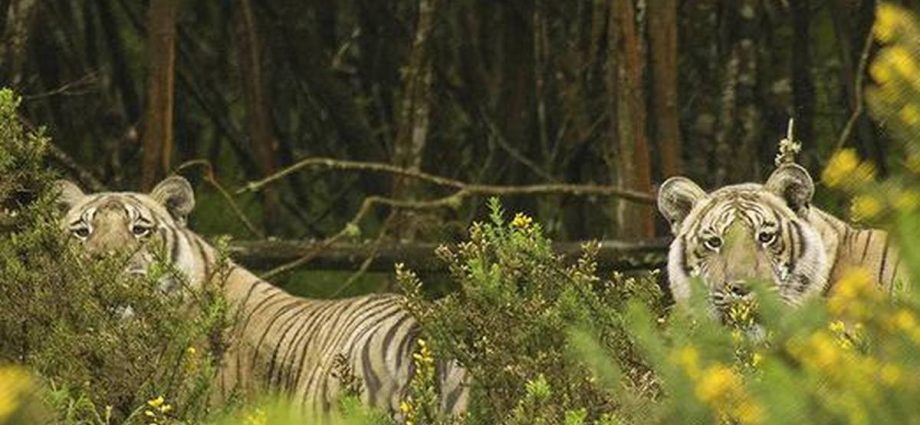Tigers seem to have been endemic to the Nilgiris from time immemorial. Tiger is mentioned in more than 20 proverbs of the Badagas, mostly as an object of pride than out of fear. One proverb says, ‘if you walk lightly it is like an oxen, if you walk firmly it is like a tiger’.
The first written record of the Nilgiris left behind by Father Finicio in 1602 describes ‘steep and rugged mountains infested with elephants and tigers’. John Sullivan, the founder of modern Nilgiris, on his maiden visit in 1819 noted the presence of several wildlife including tigers.
During the British time, tigers were constant matters of fascination, bravado and sometimes, in the early years of colonization, fertile imagination.
There is a tablet in memory of one Lt. George Armystage who died in 1830 in St. Stephen’s church placed by his fellow officers. Legend had it that the young George was in pursuit of a tiger in the shola above the church, and that on his wounding the animal it charged, and tore him to pieces. Later it turned out that George died in his bed of liver complaint, for which he was sent to the Hills, on medical certificate!
Many of the governors showed a keen interest in tiger hunting. In 1831, while leaving the Nilgiris for good governor Lushington attempted shooting about Ootacamund. He was not successful but he recommended a pension to the family of a sepoy who was killed by a tiger in the operation.
Governor Tweeddale once successfully fired a shot at a tiger only to see it walk away after a moment. On another occasion he went after a tiger near Elk Hill which had killed a cow but it turned out to be a panther.
The only recorded high profile death by a tiger was that of Commander- in-Chief, Lt.-General Sir James Dormer, in 1893 when he died from injuries inflicted by a wounded tiger. He stayed in Woodside and was buried in St. Stephens.
Tales of tiger sightings by amateur sportsmen were plenty. Once a hunter for woodcock was sitting at the bottom of the slope, waiting for the bird, suddenly heard a rustle on one side of him, and was petrified to find a huge tiger standing some seven or eight yards off, gazing steadily at him, and looking anything but pleased. However, the tiger, evidently with a full stomach, ‘after contemplating him for a while, grinned, gave a most terrifying growl, and then slowly strolled off’.
Tiger hunting was also a favourite pastime of the members of the princely states while sojourning in the Nilgiris.
Nilgiri Documentation Centre.

